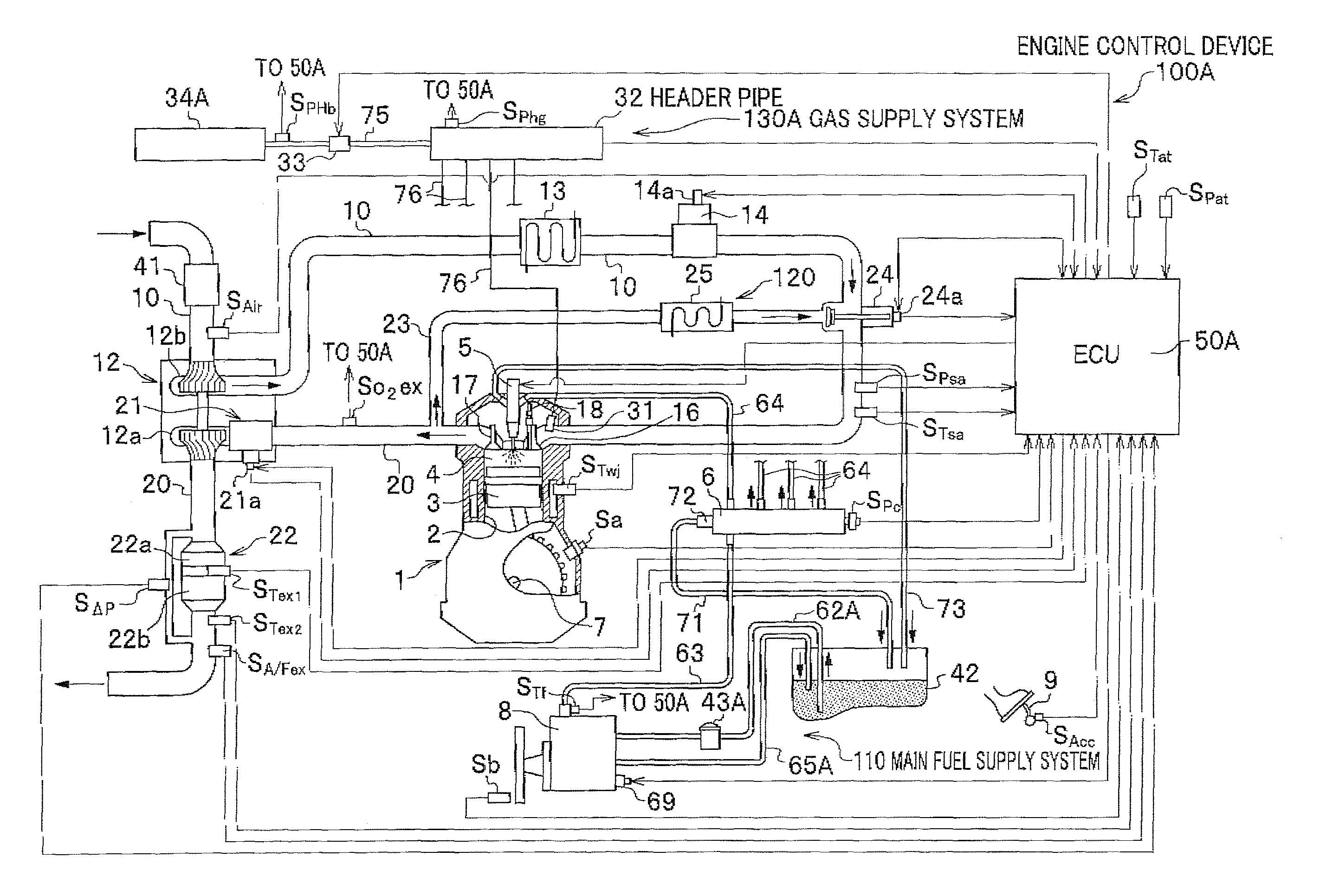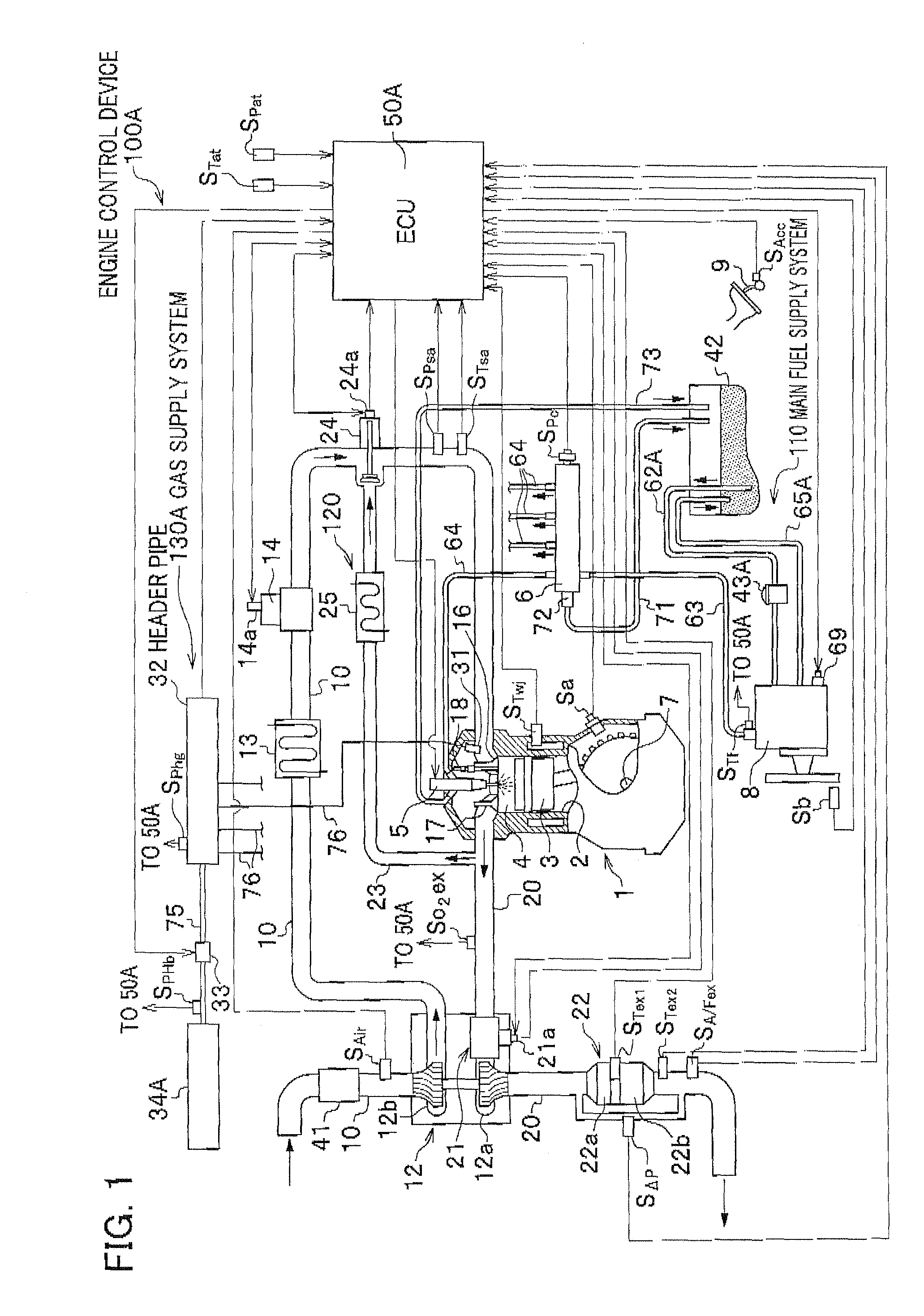Control device for internal combustion engine
a control device and internal combustion engine technology, applied in the direction of electrical control, process and machine control, instruments, etc., can solve the problems of reducing both nox, excessively high fuel concentration, and uneven combustion temperature distribution in the combustion chamber, and achieve the effect of large engine operation area and high stability of engine operation
- Summary
- Abstract
- Description
- Claims
- Application Information
AI Technical Summary
Benefits of technology
Problems solved by technology
Method used
Image
Examples
first embodiment
[0059]The outline of an engine control device (control device for an internal combustion engine) in accordance with a first embodiment of the present invention will be described below with reference to FIGS. 1-4.
[0060]FIG. 1 is a schematic functional block diagram of the engine control device in accordance with the first embodiment. FIG. 2 is an enlarged view of a cylinder head of an engine 1 shown in FIG. 1. FIG. 3 is a schematic block diagram for explaining the hardware configuration of an engine electronic control unit which is employed for the engine control device. FIG. 4 is a functional block diagram of the engine electronic control unit.
[0061]The engine 1 (internal combustion engine) shown in FIGS. 1 and 2 is a diesel engine, in which air taken into a combustion chamber 4 formed in each cylinder 2 (intake air) is compressed by a piston 3 into a high-temperature state and self ignition is caused by injecting fuel into the compressed high-temperature intake air in the combustio...
second embodiment
[0181]In the following, the outline of an engine control device in accordance with a second embodiment of the present invention will be described with reference to FIG. 3 and FIG. 18. FIG. 3 is a schematic block diagram for explaining the hardware configuration of an engine electronic control unit employed for the engine control device. FIG. 18 is a schematic functional block diagram of the engine control device in accordance with the second embodiment.
[0182]The engine control device 100B of the second embodiment differs from the engine control device 100A of the first embodiment in that a gas supply system 130B (gas supply unit) is employed in stead of the gas supply system 130A in the first embodiment. Accordingly, an ECU 50B (combustion control unit) is employed instead of the ECU 50A in the first embodiment. In FIG. 18, components equivalent to those in the first embodiment (FIG. 1) are assigned the same reference characters as those in the first embodiment and repeated explanat...
PUM
 Login to View More
Login to View More Abstract
Description
Claims
Application Information
 Login to View More
Login to View More - R&D
- Intellectual Property
- Life Sciences
- Materials
- Tech Scout
- Unparalleled Data Quality
- Higher Quality Content
- 60% Fewer Hallucinations
Browse by: Latest US Patents, China's latest patents, Technical Efficacy Thesaurus, Application Domain, Technology Topic, Popular Technical Reports.
© 2025 PatSnap. All rights reserved.Legal|Privacy policy|Modern Slavery Act Transparency Statement|Sitemap|About US| Contact US: help@patsnap.com



